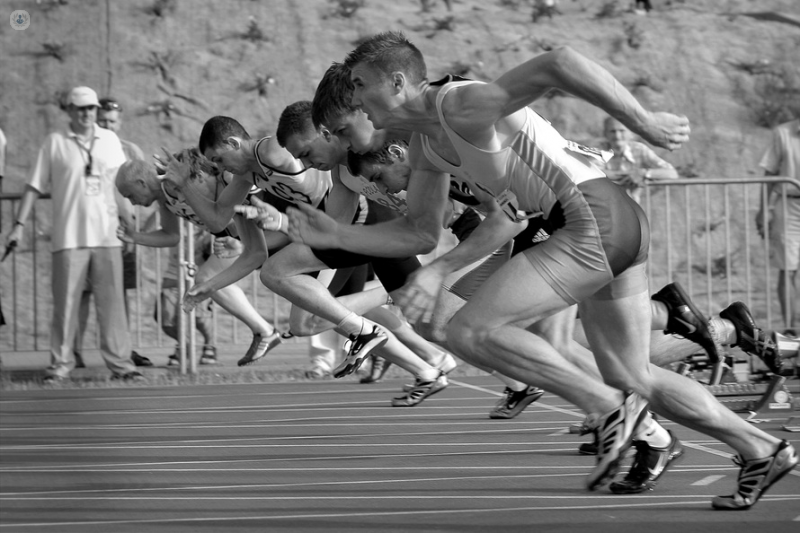La Variabilidad de la Frecuencia Cardiaca (VFC) para mejorar el rendimiento físico y la salud
Written by:Heart Rate Variability (HRV) is a parameter that, although extremely simple, brings a lot of benefits when used.
As such, HRV is defined as the temporal variation of the heartbeat frequency over a previously defined period of time (it can never exceed 24 hours).
As a rule, it is believed that a person's heart rate is stable, for example when he is at rest, so that the heartbeats are repeated rhythmically regularly, with a constant time between heartbeat and heartbeat.
Nothing is further from reality. The time between heartbeat and beat varies continuously, although this variation is so tenuous that it is impossible to appreciate it without an adequate recording method. This occurs because the heart rate is regulated by the autonomic nervous system, consisting of two branches, the sympathetic (SNS) and the parasympathetic (SNP). It is known as autonomous as it does not depend directly on the control of the brain, but operates independently. Hence the interest of the measurement and interpretation of the HRV as an indicator of the state of the autonomic nervous system.
The Parasympathetic Nervous System and the Sympathetic Nervous System in the Variability of Heart Rate
It should be noted that the autonomic nervous system is nothing more than a reflection of the balance between the Parasympathetic Nervous System (SNP) and the Sympathetic Nervous System (SNS). The SNP predominates in the rest situations, decreasing the heart rate and increasing the HRV. On the other hand, the SNS predominates in situations of mental and physical stress, increasing heart rate and decreasing HRV.
To understand its operation in a simple way, it is important to remember that the SNP controls pupil contraction, decreases heart rate and contractility, increases insulin secretion, bronchial secretion and relaxes the bladder and anal sphincters, among other things.
SNS dilates the pupil, increases frequency and contractility, causes vasoconstriction, increases lipolysis, glycogenesis and glycogenolysis, causes sphincter contraction and increases sweating.
Thus, these components of the ANS regulate the separation between the cardiac beats, although this regulation may be influenced by both psychological and physiological factors.
What does the Heart Rate Variability contribute?
For some time now it has been known that the analysis of HRV can provide much information about the heart's ability to adapt to both endogenous and exogenous loads.
It is essential to be aware that the HRV has no reference values to compare. Therefore, since each person has some values of his own, we are faced with an individual method that allows us to compare the results with those of the same person, taking as reference previous measurements and seeing the evolution over time. Therefore, it is meaningless to compare the VFC values of one person with another, in fact, we can only compare with values and always measured in the same circumstances, to see the adaptation of each person to the different phases of training.
As a general rule, it must be taken into account that the HRV, at rest, is high. During the exertion, when the frequency increases, the Variability of the Heart Rate follows an inverse behavior and is reduced, happening to be the more regular beats.
In addition, HRV is an indicator of health status, so having high HRV values is positive, and not only in athletes. If the HRV decreases, it is a bad signal, because something will not go well in the health. Therefore, a dominant parasympathetic system is needed, which is combined with intense, albeit brief, periods of activation of the sympathetic system.
In summary, the VFC allows to know the degree of stress of a person - psychological and physiological - and the capacity of recovery and adaptation of a person to the physical exercise.

The Variability of Heart Rate in Sport
For an athlete, it is clear that HRV can be a good individual marker, both to monitor their physical and physical state as well as adaptations to the effort.
If a decrease in HRV is verified, it should be taken into account that it can be a marker of fatigue, fatigue, cardiovascular maladaptation to the effort and overtraining, although in the psychological sphere it can reflect the anxiety when facing a competition.
In summary, it can be concluded that the analysis of the Variability of Heart Rate provides information that helps the following:
- Evaluate training intensity
- Determining adaptation to training
- Detect or prevent overtravel states. It is known that the HRV falls after a training session, but that its values recover after 24/72 hours of rest
- Stress management
As a general rule, high intensity workouts, lasting at least three weeks, increase HRV in both exercise and rest. If this does not happen and the HRV does not change or decrease, we may be faced with a maladaptation to training.
This is not an exclusive indicator, but a very useful complement, the use of which can be derived in three situations:
- High HRV : the athlete is recovered and can train with intensity
- VFC maintained : you can train what is planned, but not at high intensity
- Low VFC : the body may be bordering the limit. Only light cardio.
The analysis of the Variability of the Heart Rate as an indicator of health
The HRV analysis is a good indicator of health status, easily diagnosing states of stress such as burnout, fatigue, exhaustion or anxiety.
In fact, VFC measurement has been used to measure the efficacy of some cardiovascular drugs on the nervous system, as a predictor of mortality and / or the occurrence of arrhythmias, evaluation of cardiovascular complications in patients with diabetes, control of patients with hypertension arterial…
At the same time, it has gained importance in the assessment of stress. The current lifestyle involves living with an overactivation of the sympathetic system, thus interfering in the processes of repair and recovery.
For more information, consult a specialist in Sports Medicine .



